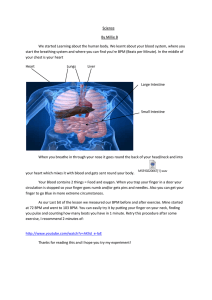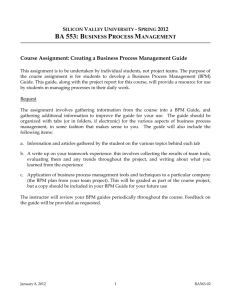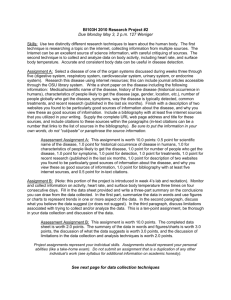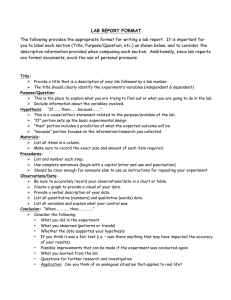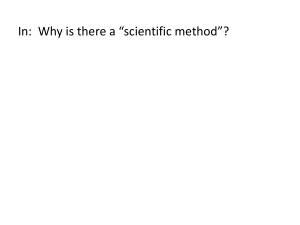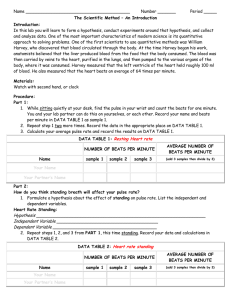Scientific Method & Heart Rate Lab: Experiment & Data Analysis
advertisement
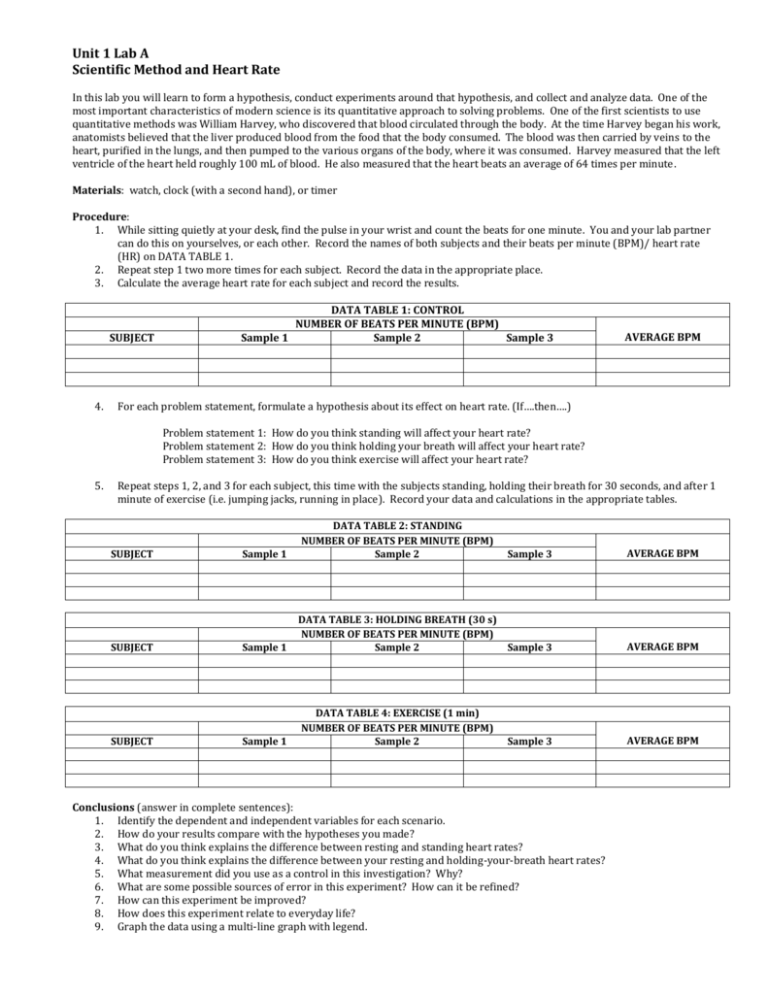
Unit 1 Lab A Scientific Method and Heart Rate In this lab you will learn to form a hypothesis, conduct experiments around that hypothesis, and collect and analyze data. One of the most important characteristics of modern science is its quantitative approach to solving problems. One of the first scientists to use quantitative methods was William Harvey, who discovered that blood circulated through the body. At the time Harvey began his work, anatomists believed that the liver produced blood from the food that the body consumed. The blood was then carried by veins to the heart, purified in the lungs, and then pumped to the various organs of the body, where it was consumed. Harvey measured that the left ventricle of the heart held roughly 100 mL of blood. He also measured that the heart beats an average of 64 times per minute. Materials: watch, clock (with a second hand), or timer Procedure: 1. While sitting quietly at your desk, find the pulse in your wrist and count the beats for one minute. You and your lab partner can do this on yourselves, or each other. Record the names of both subjects and their beats per minute (BPM)/ heart rate (HR) on DATA TABLE 1. 2. Repeat step 1 two more times for each subject. Record the data in the appropriate place. 3. Calculate the average heart rate for each subject and record the results. SUBJECT 4. DATA TABLE 1: CONTROL NUMBER OF BEATS PER MINUTE (BPM) Sample 1 Sample 2 Sample 3 AVERAGE BPM For each problem statement, formulate a hypothesis about its effect on heart rate. (If….then….) Problem statement 1: How do you think standing will affect your heart rate? Problem statement 2: How do you think holding your breath will affect your heart rate? Problem statement 3: How do you think exercise will affect your heart rate? 5. Repeat steps 1, 2, and 3 for each subject, this time with the subjects standing, holding their breath for 30 seconds, and after 1 minute of exercise (i.e. jumping jacks, running in place). Record your data and calculations in the appropriate tables. SUBJECT SUBJECT SUBJECT Sample 1 DATA TABLE 2: STANDING NUMBER OF BEATS PER MINUTE (BPM) Sample 2 Sample 3 AVERAGE BPM Sample 1 DATA TABLE 3: HOLDING BREATH (30 s) NUMBER OF BEATS PER MINUTE (BPM) Sample 2 Sample 3 AVERAGE BPM Sample 1 DATA TABLE 4: EXERCISE (1 min) NUMBER OF BEATS PER MINUTE (BPM) Sample 2 AVERAGE BPM Sample 3 Conclusions (answer in complete sentences): 1. Identify the dependent and independent variables for each scenario. 2. How do your results compare with the hypotheses you made? 3. What do you think explains the difference between resting and standing heart rates? 4. What do you think explains the difference between your resting and holding-your-breath heart rates? 5. What measurement did you use as a control in this investigation? Why? 6. What are some possible sources of error in this experiment? How can it be refined? 7. How can this experiment be improved? 8. How does this experiment relate to everyday life? 9. Graph the data using a multi-line graph with legend.
